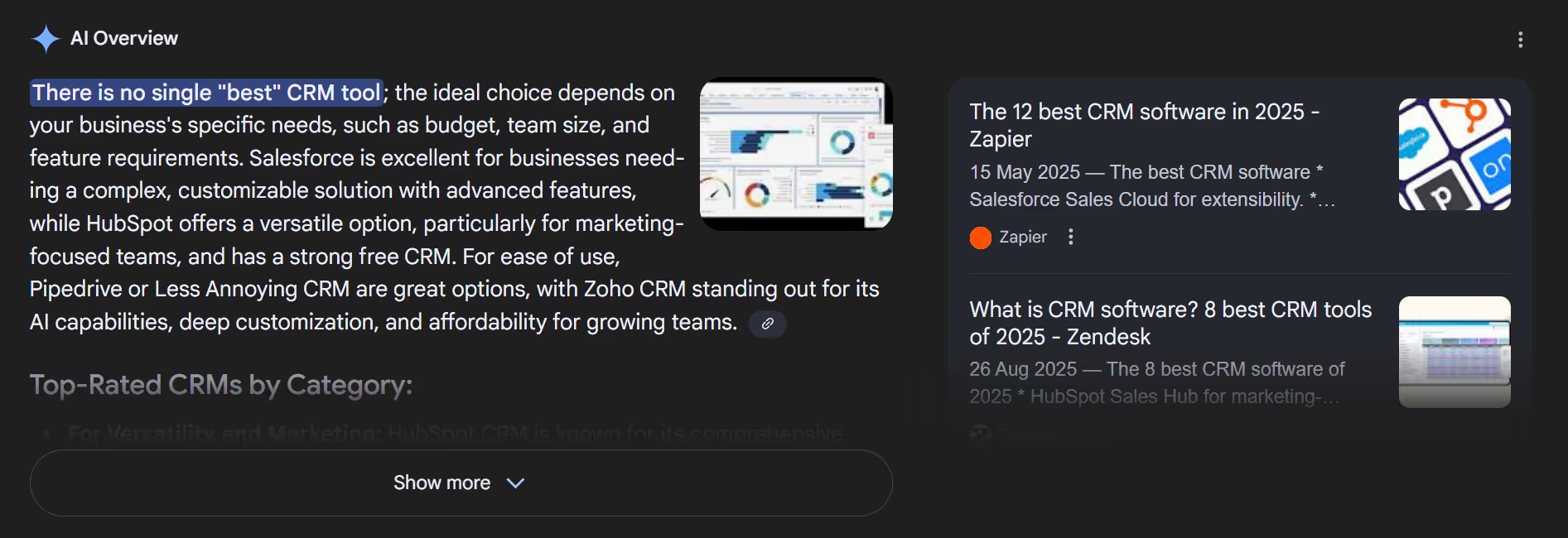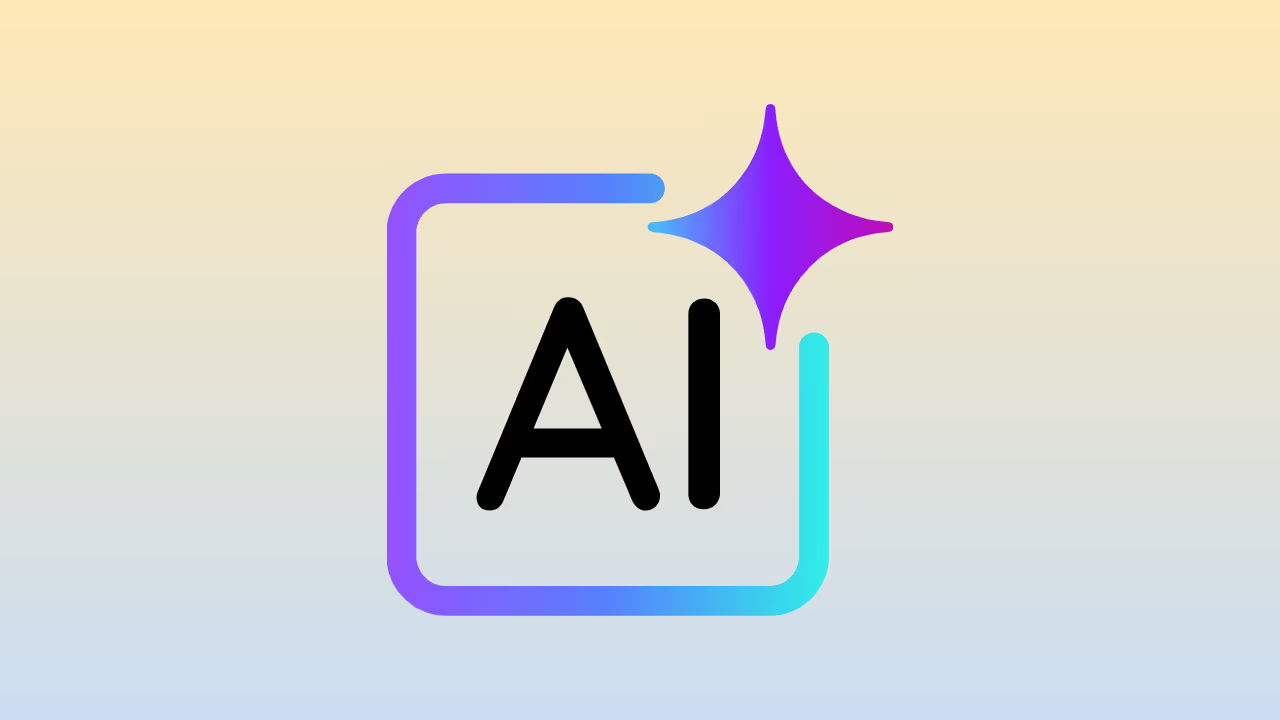Google's search landscape has fundamentally changed. AI Overviews now appear in a significant portion of searches, occupying substantial space at the top of results pages and pushing traditional organic listings further down. If your content isn't appearing in these AI-generated summaries, you're missing the conversation entirely—even if you rank #1 in traditional results.
This shift requires a strategic recalibration. Success in 2025 isn't just about driving clicks; it's about earning citations and building visibility where users actually look first.
Understanding the Zero-Click Reality
The data tells a clear story. For queries where AI Overviews appear, organic click-through rates have declined substantially. But this isn't the catastrophe it appears to be.
Google deploys AI Overviews strategically—primarily for queries that already had lower click-through rates before the feature existed. These are informational searches where users want quick answers, not deep dives. The system is working exactly as intended, satisfying initial curiosity directly on the search results page.
What matters now is the brand effect. When your content gets cited in an AI Overview, something interesting happens: your organic click-through rate actually improves for users who do click through, and your paid search performance often benefits as well. Being featured by Google's AI creates social proof that measurably improves conversion rates across your entire search presence.
The Citation Economy
AI Overviews have created a new currency: authoritative citations. Research indicates that the majority of AI Overview citations come from content already ranking in the traditional top 10 organic results. This isn't a replacement for traditional SEO; it's an amplification of it.
In high-stakes categories like health and finance, citations dominate AI Overview content. Google isn't gambling with accuracy in Your Money or Your Life topics. The system favors established authorities with proven track records.
The strategic implication is straightforward: you must rank well organically before you can expect AI Overview inclusion. Technical excellence, comprehensive content, quality backlinks, and strong user experience aren't optional—they're prerequisites.
E-E-A-T: The Gatekeeper for AI Inclusion
Google's E-E-A-T framework (Experience, Expertise, Authoritativeness, Trustworthiness) has become the primary filter for AI Overview selection. The 2025 updates to the Search Quality Rater Guidelines made this explicit, with new sections specifically addressing how to evaluate AI-generated summaries.
The critical addition is Experience—the first "E." Content must demonstrate first-hand knowledge. A tax software review carries more weight when written by someone who has actually used multiple services, even without formal accounting credentials. This isn't about credentials alone; it's about proving you've done the work.
The September 2025 guidelines also expanded the definition of Your Money or Your Life content to include government, civics, and election information. If you publish in these areas, the bar for AI Overview inclusion is exceptionally high. Google prioritizes institutional sources—government agencies, academic institutions, established organizations—over individual publishers.
Implementing Technical Optimization
AI Overviews rely on natural language processing models that work best with unambiguous, clearly structured content. Optimization requires specific technical approaches.
Structure for Machine Understanding
The inverted pyramid model is non-negotiable. State your answer immediately and directly, then provide supporting details. Large language models parse content more effectively when facts aren't buried in lengthy paragraphs.
Write in short, declarative sentences. Use paragraphs of 2-4 sentences maximum. Format subheadings as questions that mirror actual user queries. This structure not only helps AI extraction but also increases your chances of capturing featured snippets, which frequently serve as source material for AI Overviews.
Use clear formatting elements: bulleted lists for distinct items, numbered lists for sequential steps, bold text for key terms. Add descriptive alt text to images containing data or processes. These aren't aesthetic choices—they're technical requirements for machine readability.
Deploy Strategic Schema Markup
Structured data is the direct communication channel between your content and Google's Knowledge Graph. Implement JSON-LD format exclusively; it separates markup from HTML, reducing errors and improving maintenance.
Four schema types are essential:
- Organization Schema establishes brand identity and authority. Link to your official name, logo, and verified social profiles. This connects your content to the Knowledge Graph's entity database.
- Person Schema provides E-E-A-T signals. Apply it to author pages with credentials, awards, and links to verified professional profiles. In Your Money or Your Life categories, this isn't optional.
- FAQ and HowTo Schema target common question patterns. These dramatically increase eligibility for rich results and subsequent AI Overview inclusion.
- Article Schema defines your published content, ensuring proper attribution to publisher and author. This metadata helps Google understand content context and authority signals.
Validate all implementations using Google's Rich Results Test. The tool checks not just schema.org compliance but also Google-specific requirements that often extend beyond the standard vocabulary.
Keyword Strategy for the AI Era
Traditional keyword targeting needs refinement. Segment your target keywords into two distinct categories based on zero-click potential.
High Zero-Click Keywords are informational queries where users want quick answers. Optimize these for citation and visibility, not clicks. Your goal is to be the authoritative source Google references. Examples include "how to connect Google Ads to Looker Studio" or "what is marketing attribution."
Low Zero-Click Keywords are commercial or transactional searches where users intend to take action. Maintain traditional SEO focus here: rankings, site speed, conversion optimization. These terms drive revenue.
According to Google's official blog, AI Overviews have contributed to increased search usage in major markets. Users ask more complex questions because they expect intelligent answers. Focus on long-tail, high-intent keywords that reflect this complexity. These users represent the most qualified traffic.

Content Architecture That Wins Citations
The structure of your content library matters as much as individual article quality. Build topical authority through pillar-and-cluster architecture.
Create comprehensive pillar pages on core topics—"Marketing Data Integration: Complete Guide" or "Cross-Channel Analytics: Definitive Guide." These should exceed 2,500 words with thorough coverage.
Surround each pillar with 10-15 cluster articles addressing specific subtopics: "How to integrate Google Ads data," "Facebook Ads integration best practices," "Common data integration challenges." Link cluster articles to their pillar and to each other where relevant.
This structure accomplishes multiple objectives. It signals topical expertise to Google's algorithms. It provides comprehensive coverage that AI systems can draw from for different query angles. It creates internal linking that distributes page authority effectively.
The Brand-First Philosophy
The most successful strategy for 2025 is "brand-first, not website-first." AI systems ingest information from across the web—articles, videos, podcasts, interviews, forums, social media. Your content needs visibility across all these channels.
Cross-platform distribution ensures that when AI searches for information in your domain, it encounters your brand regardless of format or location. This multimodal presence increases the likelihood of citation.
Build user loyalty through engagement. When users repeatedly visit your site, Google's personalization systems learn their preferences. This increases the probability your content surfaces in their AI Overviews.
Managing stakeholder expectations is critical. Some traffic decline is systemic, not failure. Redefine success metrics: citation frequency, branded search volume, conversion rates on qualified traffic. The search results page has become a billboard. Visibility is the achievement; clicks are the bonus.
Measuring What Matters Now
Traditional metrics focused solely on traffic volume no longer tell the complete story. Implement new KPIs that reflect the AI Overview reality.
Track citation frequency—how often your content appears in AI Overviews for target keywords. Monitor branded search volume as an indicator of awareness and recall. Measure qualified traffic conversion rates rather than raw visitor counts. High-intent traffic to conversion-focused pages matters more than high-volume traffic to informational content.
Monitor the brand effect on paid search. If AI Overview citations correlate with improved paid CTR and conversion rates, your SEO work is directly enhancing advertising ROI. This justifies continued investment and demonstrates the business value of visibility beyond clicks.
Use specialized reporting tools to track these new metrics effectively. Platforms like Dataslayer enable you to consolidate data from multiple sources—Google Search Console, Google Analytics, paid advertising platforms—into unified dashboards. This consolidated view helps you identify which content pieces are driving AI Overview citations, measure their impact on branded searches, and track the downstream conversion effects across your entire marketing funnel.
Practical Implementation Timeline
Transforming your content for AI Overview optimization requires systematic execution.
Months 1-3: Foundation
Audit existing high-value content for E-E-A-T compliance. Add detailed author biographies with credentials. Implement Organization and Person schema site-wide. Restructure top-performing articles using the inverted pyramid model. Create 8-10 new articles monthly using question-based headers and concise formatting.
Months 4-6: Acceleration
Increase production to 10-12 articles monthly. Focus 70% on how-to tutorials targeting specific long-tail queries, 30% on comparison and alternative content. Build systematic internal linking between related articles. Begin outreach for quality backlinks from authoritative domains in your space.
Months 7-12: Expansion
Scale to 12-15 articles monthly. Add comprehensive pillar pages and case studies. Implement FAQ and HowTo schema across relevant content. Target comparison keywords for competitor tools. Build topical clusters that demonstrate comprehensive expertise.
This timeline assumes consistent execution. The compounding effects of technical optimization, content volume, and earned authority take time to materialize.
The Competitive Advantage
Most publishers are still optimizing for yesterday's search engine. They focus exclusively on rankings and clicks while ignoring the citation economy. This creates opportunity.
Early adopters who build for AI Overview inclusion are establishing authority before their competitors recognize the shift. The technical requirements—proper schema implementation, E-E-A-T signals, machine-readable content structure—take months to deploy across a content library. Organizations that start now will hold advantages that competitors cannot quickly replicate.
AI Overview adoption continues to expand. Search behavior is evolving toward more complex queries. Users increasingly trust AI-synthesized information. The window for establishing authority in this new system is open now but won't remain open indefinitely.
Conclusion
Optimizing for Google AI Overviews in 2025 isn't a separate discipline from traditional SEO—it's the evolution of it. The fundamentals remain: create genuinely valuable content, demonstrate expertise, build authority, earn trust. The difference lies in how these fundamentals are expressed technically and structurally.
Success requires accepting that visibility has value independent of clicks. It demands precise technical implementation of schema markup and content structure. It necessitates building E-E-A-T signals that machines can parse and validate.
The organizations that thrive in this environment will be those that recognize AI Overviews as an opportunity rather than a threat. They'll measure success through citations and brand recall rather than traffic volume alone. They'll structure content for machine understanding while maintaining human value.
The search landscape has changed. Your strategy must change with it.







